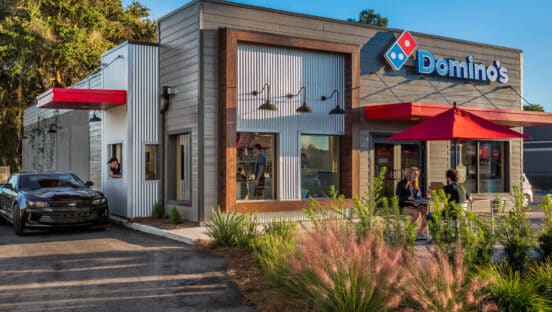As the economy rebounds, supply chains are squeezed, labor costs are skyrocketing, and the food industry is facing the steepest rise in inflation since the Great Recession. The price rises we’re all noticing at the grocery store—and anywhere else that sells food—is affecting big food makers, grocery chains, dine-in restaurants and, especially, quick-serves.
A recent survey of 24 restaurant chains found that 70 percent had raised prices this year, with quick-service brands seeing the largest increases on average—6 percent compared, with 3 percent at fast-casual chains, and 1 percent at casual-dining chains. With many Americans still relying on quick-serves for cost-effective meals, these price hikes pose serious business and brand challenges.
One way restaurants are trying to mitigate price hikes is by adapting their menus. The Wall Street Journal reported that the average number of menu items in full-service restaurants dropped by some 20 percent in the past year. And indeed, simplifying menus can lower overhead and keep consumer prices in check by helping kitchens run more efficiently, shortening employee training and reducing waste.
Yet menu changes alone may not be sufficient. And given the massive pandemic-fueled shift to digital-first we’ve witnessed over the past 18 months, there is one cost-saving resource that most quick-service brands have yet tapped into: their data.
Where did the data come from?
Remember the olden days, pre-pandemic, when some 80 percent of traffic was in-store? Those days seem long gone when we look at how restaurants do business and maintain loyalty today.
Before COVID-19, quick-serves were inching their way into the digital-first world by building kiosks and mobile applications. When the pandemic hit, brands were thrust into a brave new digital world. Pre-virus, diners tended to prioritize deals and convenience over brand—using DoorDash, UberEats or Grubhub to find a burger, not necessarily a specific restaurant. But when dine-in shut down, people still craved familiar tastes. They sought out their favorite restaurant brands, then looked for a way to order. This left quick-service chains scrambling to take full control of the digital customer journey with their own branded apps.
Today, most major brands have their own branded apps, which means that the digital restaurant experience is here to stay. The best part? These apps are a treasure trove of customer experience data waiting to be leveraged.
But one significant question remains: How can quick-service restaurants use the data they’re generating to impact the bottom line and better mitigate the impact of inflation?
Three ways restaurant customer experience data helps
Digital payment options are good news for bottom lines. Customers ordering via digital spend more per meal. The reason? Digital-first diners feel less rushed, so they spend more time leisurely browsing the menu and adding items. What’s more, upselling and special offers via digital, in general, perform better than in-person offers.
As prices continue to rise, quick-serves need to consider how sudden shifts in costs will impact the customer digital experience. Price rises may be unavoidable, but digital friction is not. Here are three tips to better leverage your data and mitigate the impact of inflation-driven price hikes:
Understand how diners are shopping, not just eating
Gather, track, and measure data across all digital customer touchpoints and all stages of the sales funnel. Capture customer signals on your website, native mobile app, menu board and kiosk—every tap, click, and scroll. Aggregate and interpret behavioral data to understand how customers are trying to order in the wake of price hikes. Are they going straight for bundles or trying to save money by purchasing single menu items? Understanding how diners are shopping, not just how they’re purchasing, can help you price items or bundles more effectively, and better tailor your upselling opportunities and special offers.
Get proactive about friction and drop-offs
Digital friction causes lower order sizes and, worse yet, cart abandonment. Get proactive and watch for data that flags behavioral and technical anomalies. These signals usually indicate customer friction—rage clicks and taps (multiple tapping in the same area), 404 errors, API errors, app suspends, long running spinners, etc. Check how indicators of customer frustration correlate with recently-changed prices, and formulate a strategy to keep the customer engaged with before-you-leave special offers and meal bundles.
Cultivate digital empathy
When guests dine-in, you can observe and interact with them. Understanding their needs, intentions, and frustrations is much easier. Leveraging customer experience data, quick-service restaurants can empathize with diners on digital by ensuring that you understand, at scale, exactly what they are doing. By securely replaying web and app sessions to observe customer interactions and where/how certain features fail, then correlating this behavioral data with sales data, brands can gain a deep understanding not only of what diners are doing over digital, but how the customer experience impacts revenue.
The Bottom Line
The right data, combined with the right analytics, can enable restaurants to keep their fingers on the pulse of price changes, respond more effectively to customer feedback, improve digital promotions, and much more. In the current economic climate, price increases will be inevitable. But whether or not price hikes have a detrimental effect on the diner’s digital experience—and your bottom line—may not be.
Mario Ciabarra, founder and CEO of Quantum Metric, is a computer scientist and tech entrepreneur helping organizations align the entire product lifecycle for many major global brands with a single version of customer-defined and quantified truth.











